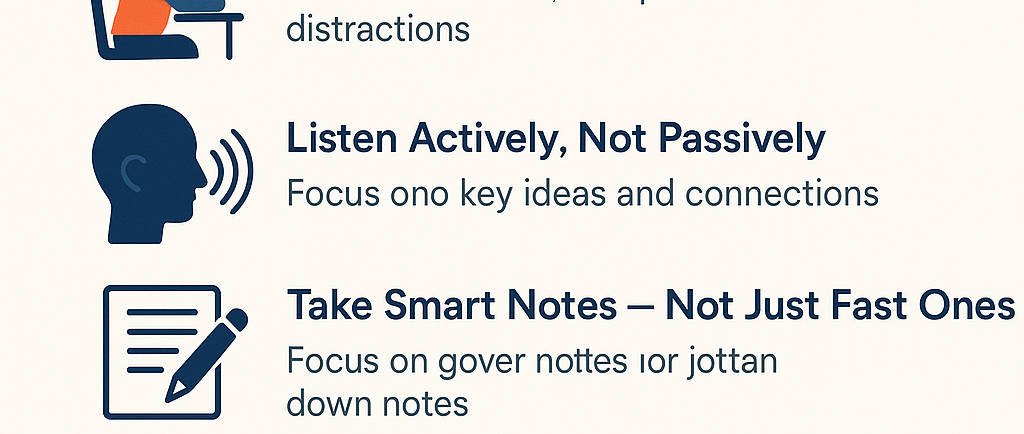How to Grasp More Information from Classroom Lectures: A Practical Guide


Classroom lectures can either be goldmines of knowledge or hour-long battles against distraction. The difference? How you listen, think, and engage. If you often walk out of class feeling like you understood nothing or forgot everything, you’re not alone. But with a few smart strategies, you can drastically improve how much you grasp — and retain — from every lecture.
1.Prepare Before You Enter the Room
Don’t wait for the lecture to start learning. Skim the chapter or topic beforehand. Even a 10-minute preview gives your brain a mental “map” so you can connect the dots better during the lecture. You don’t need to study everything — just get familiar with key terms or headings. It’s like walking into a movie already knowing the characters. Everything makes more sense
2.Sit Where You Can Focus
Your physical environment affects your brain. Sitting near the front — or anywhere with minimal distraction — helps you stay alert and more likely to participate. Avoid zones where your attention may drift, like near open windows, chatty friends, or the back row.
3.Listen Actively, Not Passively
Don’t just hear — listen. Active listening means trying to understand why the teacher is saying something, not just what. Ask yourself questions as they speak:
“Why is this important?”
“How does this connect to what we learned last week?”
“What example can I think of?”
This mental engagement turns information into understanding.
4.Take Smart Notes — Not Just Fast Ones
Instead of copying every word, focus on capturing key ideas, definitions, and connections. Use symbols, abbreviations, or diagrams. Consider methods like the Cornell Note-taking System or mind mapping. Leave space to add thoughts or summaries later. Remember: good notes don’t just record — they help you review and remember.
5.Ask Questions — Even Silently
If something’s unclear, raise your hand or jot it down to ask later. If you’re shy, even whispering the question in your mind helps. The act of forming a question means your brain is trying to process and internalize the information.
6.Review Within 24 Hours
Studies show we forget 50–70% of what we hear within a day. Combat this “forgetting curve” by reviewing your notes within 24 hours. Recite aloud, teach it to a friend, or write a short summary. The sooner you reinforce what you learned, the longer it sticks.
7.Connect Emotionally and Visually
Try to relate topics to your personal life or visualise them. A boring history lecture? Imagine it as a movie. A dry math formula? Turn it into a puzzle. Emotions and visuals anchor information more deeply in memory than dry facts.
Final Thought:
Grasping more from lectures isn’t about working harder — it’s about being present, curious, and strategic. By prepping ahead, listening actively, taking thoughtful notes, and reviewing smartly, you turn lectures from passive experiences into powerful learning tools. So next time you’re in class, don’t just attend — engage. Your future self will thank you.
